Fast Food Maniac From Arby’s to White Castle, One Man’s Supersized Obsession with America’s Favorite Food
From Arby’s to White Castle, One Man’s Supersized Obsession with America’s Favorite Food
JON HEIN is a regular on The Howard Stern Show, as well as a co-host of The Wrap-Up Show. An avid consumer of pop culture and fast food, he is the author of Jump the Shark and was the host ofFast Food Mania on Discovery TV. He lives with his family in New York.
The beloved personality from The Howard Stern Show celebrates American fast food, exploring the history and secret menu items of both national and regional chains, ranking everything from burgers and fries to ice and mascots, and offering his own expert tips on where to go and what to order.
Jon Hein is the ultimate fast food maniac, and in this book he draws on his extensive knowledge of, and love for, both nationwide chains and regional gems, from McDonald’s and KFC to In-N-Out Burger and Carvel. He digs into their origin stories; reveals secret menu items; includes best lists for everything from fried chicken and shakes to connoisseur concerns such as straws and biscuits; takes a nostalgic look back at the best giveaways, slogans, and uniforms; and even provides a battle-tested drive-thru strategy. With behind-the-counter looks at places like the Dunkin’ Donuts headquarters and Nathan’s original hot dog stand, Fast Food Maniac is the definitive, cross-country guide to some of America’s best-loved guilty pleasures.
JON HEIN is a regular on The Howard Stern Show, as well as a co-host of The Wrap-Up Show. An avid consumer of pop culture and fast food, he is the author of Jump the Shark and was the host ofFast Food Mania on Discovery TV. He lives with his family in New York.
Fans of The Howard Stern Show know full well that Wrap-Up Show host John Hein is an aficionado of fast food. He has even hosted two shows on the subject. Recently John was able to compile his encyclopedic knowledge into Fast Food Maniac a comprehensive guide to the world of fast food. We recently had the pleasure of sitting down with John and discussing all manner of things fast food; from questionable mascot choices, to secret menu items, to who has the best ice and pretty much everything in between.
Booksaboutfood.com (BAF): This may seem like an odd question, but what is your definition of fast food?
Jon Hein: You know, it’s not an odd question. It’s a great question. I define it in the book but I define it … it’s my definition of fast food. I think I wrote in the book, which isn’t front of me, but I wrote sort of a Merriam-Webster definition of fast food which is getting your food quickly in a variety of different ways.
There are many different ways to define it, I guess. This is a long-winded answer, I apologize, but you need to be able to get it quick, but that’s only part of it, I think, because a lot of … a fast food place doesn’t have waiter service, for example. Yet if you go into Pizza Hut, there’s waiter service, so immediately there’s an exception to the rule, so no table service or sit-down waiter service.
There’s a number of other rules that all quick service restaurants, or QSRs, include fast casual places which are like Chipotle and Subway. They’re fast food. Why? Because there’s nobody waiting on you. You go down the line, you see your food made quickly, and then you get it, so that qualifies as fast food. Technically pizza really isn’t fast food because it’s either delivered to you … it’s mostly delivered to you in our world of Domino’s, Little Caesar’s, Papa John’s, stuff like that, and in New York and Chicago it’s sacrilege. Yet, I would argue very strongly that Papa John’s is fast food pizza. Use that adjective as you will.
There are a number of different explanations. If you go to a place and it has a drive through, it’s probably fast food.
BAF: Actually, I was going through your book, and I got really hungry today, so I went to Wendy’s,
Jon Hein: They’re actually remodeling all the Wendy’s now. They’re on a big kick to knock down the old ones and put up the new and make them with WiFi. They want people to stay. It’s the Starbucks model. They want people, once you get there, to stay and be comfortable because they want you to buy more food of course.
BAF: Isn’t that the opposite of what it used to be, and seats, the bright, garish colors, to get people in and out quickly?
Jon Hein: Exactly right. Fast food used to be all about the time you spent there. The less the better because it was a volume business, and also I think they put more care into the preparation and the execution of giving you the food now than they might have back in the day. Yeah, it’s really changed as to what people consider a fast food place and also what the fast food places want out of you as a customer for sure.
BAF: How did you go about with the research? There’s a lot of research in here.
Jon Hein: The book took me a couple years to write. I mean, technically I’ve been doing this research for most of my life, going to these different places, experiencing the different places. The TV show had a lot to do with it because I got to see the home bases and how the stuff is made and things like that, but once I decided to do a book, I wanted to write about places that I’d been to and experienced firsthand and really give my take on the different things because everyone’s got an opinion, you know.
Just because I don’t enjoy Burger King doesn’t mean someone else can’t, but whenever I’m in different places in the country especially, I always wonder, “Is there an all-American burger, like in Massapequa?” There’s got to be one wherever I am, and I’d like to experience that kind of food and so I really dug deep and that’s why there’s 26 regionals in the book. I wanted to provide that for people as they were traveling. A lot of people on the East Coast have heard about In-N-Out Burger but have never experienced it. On the flip side, people in the South don’t know what White Castle is, or people in the North don’t know what Krystal is. That may be a good thing or a bad depending upon your point of view.
Krystal and White Castle are on the same plane. Checkers and Rally’s, it’s the same thing. Carl’s Jr. And Hardee’s. I mean, they’re both, they’re bicoastal, but I think when you go to a fast food place, you make a bargain with yourself. You know what you’re getting when you walk in the door. You’re not expecting a Peter Luger steak. You’re not expecting something that come out of Le Cirque, but that’s okay, because I think a lot of people out there, including myself, would prefer that kind of food verses the other food depending upon the circumstance and what you want at that particular moment.
BAF: One of the things that I really did liked about the book was the regional aspect. I think that’s a terrific aspect. What’s your definition of local versus regional?
Jon Hein: If it wasn’t on a true, national scale, I called it a regional, but I know I have All-American in there. There’s one location. I just feel All-American should be all over the place. Similarly you look at a place like Raising Cane’s or even Dick’s Drive-In, let’s say, in Seattle, there’s six of those, those, I feel, could be all over the country. They’re that good, but Dick’s purposely said, “We want to keep it here. This is what we want. We’re happy with it. We like the quality of the food, and we want to keep it sort of close.”
Same with Duchess in Connecticut. There are tons of people who live here who have probably never heard of Duchess. There’s sixteen of them, I think now, so it definitely varies depending upon what you consider a region. Now, in other parts of the country, regions are much larger. In New York you’ve got the New York Metro Region. It’s very small. Between even Long Island you could split it Nassau and Suffolk.
When you’re in those big, rectangular states, it’s a whole different ball game. There’s a lot more territory to cover, so a place like Culver’s or Braum’s are good examples of fast food places that people love out there that cover hundreds or thousands of miles of territory you’d never otherwise experience. Cafe Rio is like that. Capriotti’s in Delaware is a smaller one, so again, when you’re going to travel, it’s great when you stumble upon these little places that are institutions in these smaller markets, yet you would never know otherwise.
BAF: Since the book, have people come up to you and said, “Love the book, but you forgot my favorite chicken chain or you missed a barbecue chain, so is part of the fun that, this is helping you discover new places?
Jon Hein: Absolutely. I think I was jokingly obnoxious about it in the intro to the book and I hope people knew I was joking, but I say, you know, it’s my book. These are the places that I want to write about. Zaxby’s, Firehouse Subs, Jimmy John’s, Smashburger, BurgerFi, I could give you … I just gave you five off the top of my head that aren’t in the book. I couldn’t cover everything because, again, if I didn’t know the place, I didn’t feel comfortable about it.
There were other places like Habit Burger which is fantastic, but there’s just one, and it seems more gourmet-ish versus fast food-ish and this, to me, was more about, I wanted to be able, as I said before, to either go through the drive-through or be at an airport and see it or a food court. That’s what this book is really about. Those types of places.
BAF: Howard (Stern), is notoriously a bit of a ball buster. You must have known going into this that at some point, you were going to get called on the carpet and you were going to hear about it.
Jon Hein: Yeah. As Sal Governale says, “It’s the wages of working there,” which is completely incorrect, grammatically. But yeah, that’s just the environment that we work in. It’s almost worse if Howard came in and said, “This book is the best thing I’ve read since War and Peace and I highly recommend.” You’re not going to get that. Of course he’s going to goof on me and everybody else and that’s part of the workplace that we’re in, which I love.
Overall, I’ve been there full-time for over ten years. I’m okay. A lot of people get it a lot worse than I do there. I do my best to not intentionally avoid it, but being more, sort of normal, I end up being less ball-busted, but with this, I gave Robin (Quivers) a book. I knew Robin was going to immediately go after me, and that’s okay because, the truth is, Robin used to eat like this. Howard used to eat like this. They’ve got a lot of expertise in this area whether they want to admit it now or not. They also enjoy how crazy I am about it, because whether it’s this or Star Trek or Comic Con or anything someone really drills down and becomes a quote-unquote “expert” in, they love to make fun of, so it fits the bill. I’m okay with that.
BAF: As you have said on the air, part of working there is ‘taking one for the team’.
Jon Hein: Absolutely.
BAF: You really, really get down to details. You talk about the best place for straws, the best places for ice. This is clearly a labor of love.
Jon Hein: The lists I love making and not because of Gary and what he did in his book, but rather, I have these discussions with people all the time, my friends, other people who know I’m into this kind of thing, and I also experienced it with jump the shark, too. The more you get into minutiae, the more people are interested and fascinated by it.
It’s easy to make a best burger list or a best fries or best straws. It’s much more difficult when you’re talking…about secret menus or you’re talking about ice as you said or mascots or slogans, then you’re really getting into the nitty-gritty, and that’s where the fun … because you can laugh about it, but people also are very passionate about it and they want to know what you think your favorite is or why something is left off the list. That’s the most feedback I got on the book. How can you rate this number one? How could you leave this out? Have you ever had the ice at Hardee’s, and it’s fun. It’s funny, but I get it. I understand why people are so passionate about it.
BAF: About mascots, did you ever see Willard Scott when he was the original mascot?
Jon Hein: Yeah, he was Ronald.
BAF: That was one creepy clown.
Jon Hein: He sure was.
BAF: I’m not afraid of clowns, but I’m afraid of that one.
Jon Hein: I’ll agree. I wrote very detailed about my feelings on the Burger King and how he scares people. Just not a wise mascot. McDonald’s is very smart about that. They made Ronald, at least early on, after Willard, very likable. He was your best friend. He was the one who was going to give you this great food and the wonderful experience and they created a McDonald’s land with all those characters. As a kid you wanted to be a part of that. It made you … felt very warm and safe. It was very wise of McDonald’s from a marketing perspective.
Other places had tried to follow suit. Some with success, some without. When you’re doing a mascot, you want that mascot to be inviting and warm and friendly or funny, like Jack from Jack in the Box is a ping pong ball, but they do an unbelievable job marketing Jack. There are ways to do it if you’re smart. Some of the … the ones I write on my list certainly are not the best.
BAF: I think McDonald’s perhaps owes something to Sesame Street because that was around the same time
Jon Hein: That’s a great point.
BAF: What about buffets like Golden Corral, Cicis Pizza?
Jon Hein: You mean like Sizzler? Those types?
BAF: Would they fall under fast food?
Jon Hein: No, because with a buffet, there’s no menu. There is a menu to choose from, but it’s a different, sort of, experience. Most of these fast food restaurants are not all you can eat. They’re very specific in their items and the choices that you have to make when you’re there. The buffet is kind of like a catch-all, but some Pizza Huts in the Midwest have buffets, so once again, I’ve contradicted myself in saying that there are no buffets in the book. But no, I didn’t hit Golden Corral.
The other thing I didn’t hit in the book which I would do if I did another one would be breakfast. I didn’t do any breakfast items. I did dessert. I did all types of food, but I didn’t do breakfast because once I do that, that would be another 300 pages, and I wasn’t ready for that. I wanted to make sure I focused on this.
BAF: What about foreign chains coming in. For example here in New York I have seen a number of Asian chains opening. Do you go into those at all or do you stick mainly with American?
Jon Hein: Honestly, I stick mostly with American but that’s because I eat like a six-year-old. I do see a lot of Korean barbecue places popping up. The fish and chips craze came from England originally. I think it’s very, very difficult for an international fast food place to succeed here because part of the success, I think, of these places is, and I don’t know if this is the right word or not, but I believe it is, is the ubiquity of it. You need to know if you’re going to McDonald’s in Topeka or Jacksonville or New York you’re going to get the same thing.
With an international place I think part of the flavor of it is the uniqueness of it and how you can’t necessarily replicate it in different places. I don’t know if it necessarily would work. I do know that quite a few of these places, KFC in particular, has tremendous international success, but the menus that you see internationally are quite different than the ones domestically.
BAF: It’s something, when I travel, I do make a point of going to McDonald’s or whatever place that could I find just to see the local differences of the menu and try the food. The one exception that I’ve found is Five Guys. It’s exactly the same in London as it is over here by the mall.
Jon Hein: I went to Aruba and there was a Five Guys there. It was the same décor, same burger, same fry, same everything and for someone like me, I’m thrilled. That’s exactly what I’m looking for, but I understand why people would want more of an international flavor, either if they went to one overseas or if you were here and you saw an international type of place.
BAF: That hits on, I think, the secret beauty of fast food places.
Jon Hein: So true. That’s a great example. To a lot of people, what is food? It’s comfort. I mean, that’s really what food is for many, many people. I’m sure you just feel like it’s a part of back home in a way. I know when I’m out on the road, on the interstate, and if I see a KFC I automatically start to feel comforted because I know what I’m going to get. I know what it’s going to cost. I don’t have to worry about what if it’s prepared this way or that way. It takes all that. Part of that, people would argue, is a boring way to eat. Another part of you would say it’s sort of the safe and comforting way to eat. I understand both.
Look, I don’t think people should eat exclusively fast food for the rest of their lives. It wouldn’t be a smart thing to do, but I don’t think they should also write it off just because it’s fast food. Try it. There’s some circumstances when you’re in a pinch and you need it. I was talking to my wife about this. McDonald’s in the seventies, really, in the eighties, the reason it was there was because there were a lot of busy parents who couldn’t get home and couldn’t’ afford something … an expensive meal and this was great way to feed the family.
I think we’ve gotten away from that in fast food over the last few years, but that was the main purpose that it served. Now we’re in a different sort of era with your Chipotle people thought, “Oh, that’s kind of healthy, and I can do that.” Even Subway, you look. There’s vegetables and meat that looks like meat. They’re not hiding the grill and more and more of these places, too, are having … are instituting open grills. I saw it at a McDonald’s. I was shocked. It’s sort of the Five Guys model. ‘You can see what we’re cooking. We’re going to show you what we’re doing because we don’t want you to think that there’s something weird going on here.’ I think as long as it doesn’t slow down the process of the food, that’s great.
BAF: Are they going as far as making their own patties by hand?
Jon Hein: No. They’re taking the patty out and they’re showing you, okay, it’s on the grill and we’re cooking in front of you. I think one of the models, I heard this, that they’re going to try is to customize your meal you can say, “Okay, I want this, I don’t want that, I want that.” I fear that’s going to slow the entire process down if they do do that.
BAF: Can I ask a little about secret menus? A lot of people don’t know about them. They’re sort of hush hush. You spoke about them on your shows. Can you go public and just tell people what they are or?
Jon Hein: You know, I was really conflicted in writing that chapter of the book because the first rule of secret-menu club is you don’t tell anyone, you don’t talk about secret-menu club. And then In-N-Out, they’ve got the most famous one, and they put on their website their secret menu, which I was really disappointed in. But then I realized they only put six things up there. There’s a lot more secret menu options at In-N-Out. I figured if In-N-Out can do it, then I can do it. That’s what led to me writing about all these secret menu items and revealing them.
Again, it’s sort of like being a member of the club when you walk in. I’ve said this before. I said this on the air, when I go to In-N-Out, I get a double meat, fries well-done, Neapolitan shake. None of those are on the menu. None of them. And the person there just goes (tap, tap, tap), that will be seven sixty-five. We’ve got this secret thing and nobody else really knows here. That’s the kid in me again, getting off on that. I love that. I think that’s so cool. Yeah, a lot of different places have them and will not publicize them because they want them to be secret.
Sometimes you’ll go into the places and they’ll have no idea what you’re talking about and then it’s your job to educate them on what this item is because the ingredients are there. They’re just variations on whatever they have in the back. They’re not importing some salmon from somewhere. It’s just putting a couple peppers or tomatoes or whatever it might be, or cooking things a little bit differently, so it’s doable. If you go to a place and you order one of the secret menu items that are in the book and they don’t know what you’re talking about, take out the book and show them or explain to them. Say, “Hey. I saw this quesarito, and this is how you put it together.”
BAF: You also said some really interesting hints on ordering. You gave some good advice.
Jon Hein: That’s what I got my balls busted for on the air. Thank you. I’m glad you thought it was good advice. I feel very strongly about that. I also feel that I’m providing a service. If everyone did it the way that I did it, then these places would run absolutely smoothly. There would never be any delays.
Some of them are common sense. I mean, when you walk into a fast food place, and you look at the register, you never want to go to a register if there’s two people working on it because that means someone’s being trained and it’s going to be slow. You want someone in a different color shirt who’s probably a manager, and they’ll get you right through. It’s little things like that.
Also, I dedicated the book to anyone who worked in a fast food place because they’re not there to mess your order up. They’re not trying to give you a hard time. They want to serve the food quickly and do a good job. I think that’s lost. I get frustrated when my order’s wrong and I understand or if I’m waiting too long in line, but give these people a break, you know what I mean. They’re not working for a lot of money. They’re doing the best they can, and chances are, you’ve probably worked in this place before.
I worked in a Baskin-Robbins and I remember what that was like, so don’t forget that. In terms of the tips and the tricks, that was probably my favorite section to write because I get so crazed about it. I really think that I could pass on new information to people that they could use when they’re there next time.
BAF: Can you just explain what the zone of death is.
Jon Hein: The ZOD. When you pull up to the drive-through, you see it. It’s this rectangle spot that’s marked off. Now they’re even putting signs up. It’s when they didn’t get your order done in time and correctly and they tell you to pull up and you want to avoid that at all costs because you’re not going to get your food for a good five minutes, and the purpose of the drive-through is to get in and out quickly. That’s the whole point. I know I’m a little obnoxious about it, but it’s a … no, this is my order. I’m going to wait here until the order is correct. Don’t push me out of the way. Get it right the first time. I’m not being rude, but I respect that other people here are waiting, but you know what? If you messed mine up, you’re probably going to mess theirs up, too. You want to avoid the ZOD at all costs.
Jon Hein: The other thing this does is, for me anyway, it provides some amusement in being there. How many times can I go into Subway and do the same thing. That’s why I like to analyze who’s in the lead-off spot, who’s [inaudible 00:27:37] because it makes it fun for me. It makes it a little more enjoyable in my head as I’m waiting for the food. It’s like killing time when you’re at the DMV except at least you get the meal when you’re done here.
BAF: Was it hard to write all this down?
Jon Hein: Yes and no because a lot of it is up here (tap his forehead). A lot of it is just years of experience. In researching the places I wanted to make sure I got all the information right about when they first started and who came up with it and the number of locations and so those details were lot of time on the computer and talking to the places. The actual writing I tried to split the entries into the first half was factual and the second half was more opinion, so I could tell you when it came to a place like Wendy’s, Dave Thomas, what he did, how it came out, why it succeeded, why they do the drive, this and that, and then the second part of it I would give my impressions, or what I thought of it.
Then I did it one-by-one, and then when I did the lists and the more fun stuff in the back, that was just great, comparing and contrasting all that stuff and trying to determine what I thought. Number one was easy because I had a pretty strong feeling about whatever the best might be, but two through five I really had to evaluate, okay, is this one better than that one? I had straws on my table. It was a very scientific process.
BAF: I sensed a lot of love for Dave Thomas in the Wendy’s chapter.
Jon Hein: Oh Dave Thomas is my hero. He’s a hall of famer. I don’t think people know that Dave Thomas is the one who came up with the bucket for KFC.
And he was part owner of Arthur Treacher’s.
Yeah, he’s the guy. Clearly he made Wendy’s what it is today.
BAF: I love the fact that you were very objective in the book. You were very fair about Burger King. Then at the end you said, “Not a big fan.”
Jon Hein: Yeah. You know what? A lot of people expected me to come out and just rip Burger King. I didn’t want to do that because I do respect their place in this world. They’ve been number two, number three, number two for a very long time. A lot of people like Burger King. I don’t, but a lot of people do. I thought I’ve displayed my feeling for them a number of times on the air and I do think that they can be salvaged and saved and I think Tim Hortons just bought them, or, I don’t know what the arrangement is, but they’re now partnered with Tim Hortons, and Tim Hortons does a good job running their shop, and I think that will help. I know they just announced they’re doing a hot dog now and they have onion rings, and they’re on their way, but somebody just kill that king.
BAF: They say when you go camping, food outdoors tastes better, but for me, it’s something about when you get your box of food, and you know there’s a really good burger inside, it’s like opening a gift instead of just tearing open a bag.
Jon Hein: It’s not a theory. It’s a fact. I couldn’t agree with you more. It’s more detailed than that, too. I think, and Wendy’s does this, when they wrap your burger individually in foil, not only is it warmer, but you get the feeling there’s more care taken into it. When you go through a drive-through, the way they stack everything in the bag is … they’re taught how to do that. Then they put the napkins on top, but they don’t close it to keep it warm. There’s all these little things that make a big, big difference, but the KFC, you’re right. When you get that box you open it up, you’ll just get that waft of crispy goodness rising up at you.
BAF: What’s next for you?
Jon Hein: Howard just signed on for five more years, which is great. I’ll be doing five more years. So there’s more of that. I’m doing a lot of sports talk shows lately. I love talking sports, so I’d like to do more sports if I can and of course, more of this. We’ll see how people like the book and I’m sure I will continue to get comments on the air and off about it and if there’s enough for another book. I would certainly do one.
Copyright 2016 Booksaboutfood.com
“Jon and I have been on-air partners for ten years. We have traveled the country together and I promise you…this man KNOWS fast food.”
– Gary Dell’Abate, New York Times bestselling author of They Call Me Baba Booey


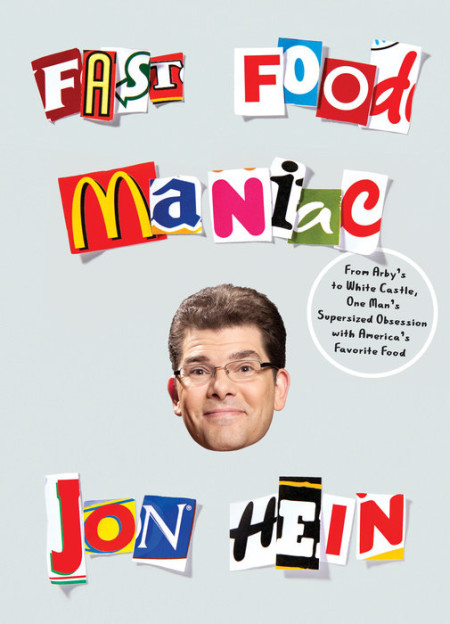


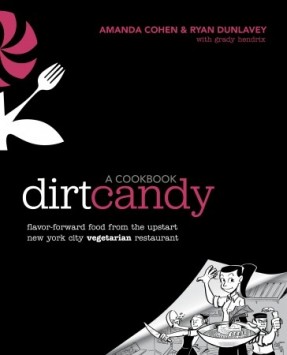
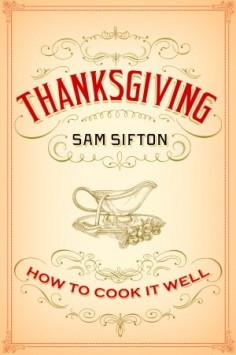
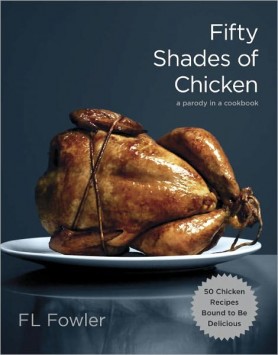
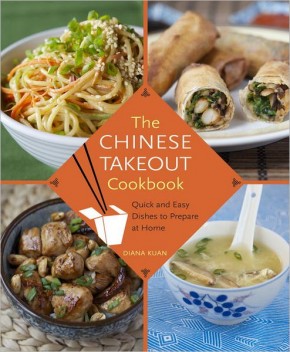
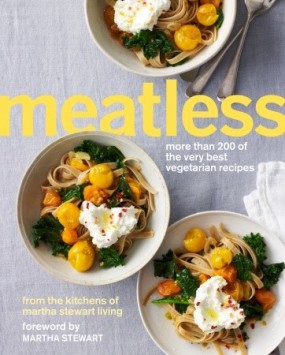
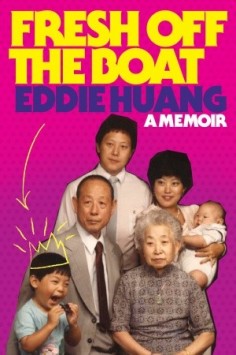
Leave a Reply